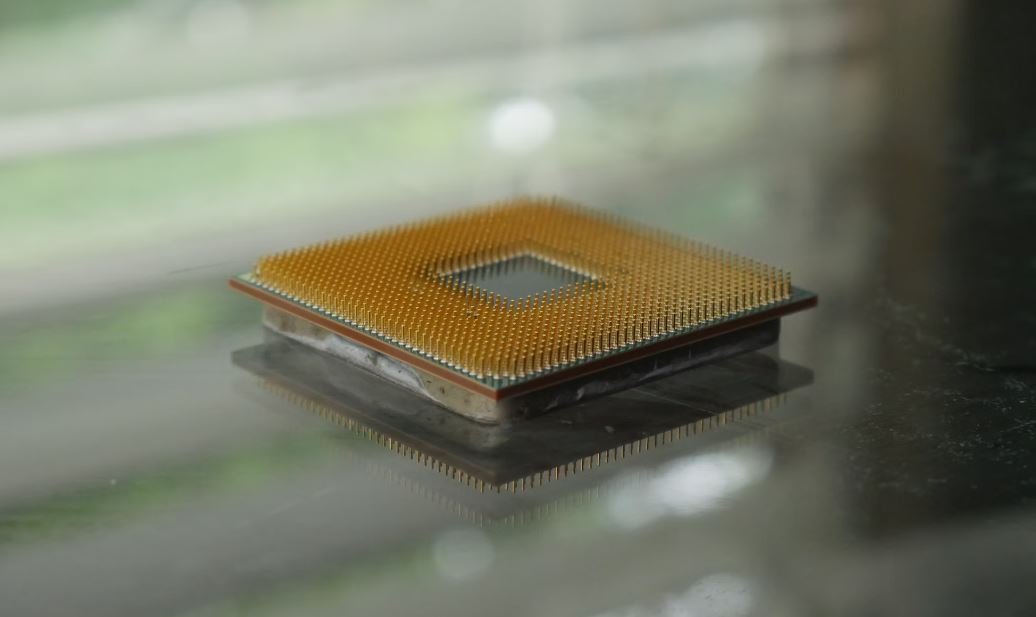SpaceX is a Private Company
SpaceX, founded in 2002 by Elon Musk, is a private aerospace manufacturer and space transportation company headquartered in Hawthorne, California. It was established with the goal of reducing space transportation costs and enabling the colonization of Mars.
SpaceX has quickly gained prominence in the aerospace industry and has achieved several milestones in its pursuit of space exploration and commercial space travel.
Key Takeaways:
- SpaceX is a privately owned aerospace manufacturer and space transportation company.
- Founded by Elon Musk in 2002, their primary goal is to reduce space transportation costs.
- SpaceX has made significant advancements in space exploration and commercial space travel.
The Pioneering Achievements of SpaceX
*In just a couple of decades, SpaceX has revolutionized the aerospace industry and propelled humanity towards a future in space.*
1. **Reusable Rockets**: One of the most significant innovations by SpaceX is the development of reusable rockets. By recovering and reusing the first stages of their rockets, SpaceX aims to drastically reduce the cost of space travel. This technological breakthrough has opened up new possibilities for commercial space exploration and made space missions more financially viable.
2. **Commercial Space Launches**: SpaceX has disrupted the traditional space industry by introducing commercial space launches. Their Falcon 9 rocket has successfully launched numerous satellites into orbit for both government and commercial customers. This has created a new market for affordable commercial space travel and satellite deployment.
3. **Dragon Spacecraft**: SpaceX has developed a spacecraft called Dragon, which can transport cargo and crew to the International Space Station (ISS). Dragon became the first commercially built and operated spacecraft to dock with the ISS, further solidifying SpaceX’s position as a pioneering private space company.
SpaceX Launch Records
In recent years, SpaceX has achieved impressive launch records, demonstrating their capabilities and reliability as a private space company. Here are three noteworthy examples:
| Mission | Date | Payload |
|---|---|---|
| Transporter-1 | January 24, 2021 | 143 satellites |
| Starlink-1 | November 11, 2019 | 60 Starlink satellites |
| SpaceX Demo-2 | May 30, 2020 | 2 NASA astronauts |
*These launch records highlight SpaceX’s capabilities in satellite deployment and crewed missions to the International Space Station.*
The Future of SpaceX
SpaceX continues to push the boundaries of space exploration and commercial space travel. With ambitious plans to colonize Mars and develop the Starship spacecraft, SpaceX aims to revolutionize the way we perceive and utilize space. The company’s success in reducing costs and developing reusable rockets has attracted significant attention and investment, propelling humanity closer to becoming a multi-planetary species.
SpaceX Achievements at a Glance
| Year | Notable Achievement |
|---|---|
| 2008 | Falcon 1 becomes the first privately-developed liquid fuel rocket to reach orbit. |
| 2012 | Dragon becomes the first commercial spacecraft to deliver cargo to the ISS. |
| 2020 | First crewed mission to the ISS by a privately owned spacecraft. |
*These achievements are just a glimpse into SpaceX’s groundbreaking contributions to the aerospace industry and space travel.*
Advantages of a Private Space Company
Being a private company provides SpaceX with several advantages over government-funded space agencies.
- **Faster Decision-Making**: Unlike government agencies that require lengthier decision-making processes, SpaceX can quickly adapt to changing circumstances and make swift advancements in technology and operations.
- **Entrepreneurial Spirit**: SpaceX’s status as a private company fosters an entrepreneurial spirit that encourages innovation and risk-taking in the pursuit of ambitious goals.
- **Cost Efficiency**: By operating as a private company, SpaceX can focus on cost efficiency and implement business strategies that prioritize sustainability and affordability.
SpaceX Launch Vehicles
SpaceX has developed several launch vehicles to accommodate a wide range of mission requirements:
- **Falcon 1**: The first privately-funded liquid-fueled vehicle to reach orbit.
- **Falcon 9**: A two-stage rocket designed for reliable and affordable launches of satellites and Dragon spacecraft.
- **Falcon Heavy**: A heavy-lift variant of the Falcon 9, capable of delivering larger payloads to orbit.
- **Starship**: An upcoming fully reusable spacecraft designed for long-duration trips to destinations such as Mars.
The Impact of SpaceX
SpaceX’s accomplishments have not only advanced the field of space exploration but also sparked a new era of commercial space ventures. With their reusable rockets, commercial satellite launches, and ambitious plans for interplanetary travel, SpaceX has inspired a wave of innovation and investment in the space industry.
| Year | Funding Raised (USD) | Valuation (USD) |
|---|---|---|
| 2002 | 1M | Unknown |
| 2008 | 20M | 1.6B |
| 2012 | 284M | 4.8B |
| 2015 | 1B | 12B |
| 2018 | 2.5B | 30.5B |
*These numbers indicate the increasing recognition and financial backing received by SpaceX over the years.*
The Advancing Frontier of Private Space Exploration
SpaceX’s endeavors in the aerospace industry have paved the way for a new wave of private space exploration and commercial space travel. With their innovative technologies, groundbreaking achievements, and ambitious goals, SpaceX continues to shape the future of humanity’s relationship with space.

Common Misconceptions
SpaceX is a Private Company
There are several common misconceptions surrounding SpaceX being a private company. Firstly, many people believe that being a private company means that SpaceX receives no government funding. However, this is not true as SpaceX has received substantial financial support from NASA for various projects and contracts.
- SpaceX has received over $3 billion in funding from NASA for the development of its Crew Dragon spacecraft.
- Despite being a private company, SpaceX is eligible for government contracts and grants, which provide an additional source of funding.
- SpaceX has also successfully bid for contracts with the Department of Defense, further debunking the misconception that it solely relies on private funding.
Dominance in the Space Industry
Another misconception is that SpaceX dominates the space industry. While the company has undoubtedly achieved remarkable successes, it does not have a complete monopoly in the industry. There are other established players such as Boeing, Lockheed Martin, and Blue Origin that remain significant competitors.
- SpaceX is one of the leading players in the space industry, but it does not have sole control over all aspects.
- Boeing, another prominent aerospace company, has also been a key player in NASA’s Commercial Crew Program, competing directly with SpaceX.
- It is important to acknowledge that the space industry is a complex ecosystem with several organizations contributing to its growth and development.
Reusability of Rockets
Some people wrongly assume that SpaceX’s rockets are fully reusable. While the company has made significant advancements in rocket reusability, it is important to note that not all components of their rockets are reusable. The company has focused on reusing the first stages of their Falcon rockets to reduce costs and increase efficiency.
- SpaceX has successfully landed and reused numerous rocket boosters, but the upper stages are currently not reusable.
- The Falcon Heavy, which is composed of three boosters, is partially reusable, but not entirely.
- SpaceX is actively working on developing a fully reusable rocket with its Starship project, but it is not currently in operation.
Operations beyond Earth’s Orbit
Many people assume that SpaceX’s operations are solely focused on Earth’s orbit. However, the company has ambitious plans to go beyond low Earth orbit and explore destinations like the Moon and Mars. SpaceX’s ultimate goal is to establish a self-sustaining human presence on Mars, which involves developing advanced spacecraft and technologies.
- SpaceX’s Starship is being designed to transport humans and cargo to destinations beyond Earth’s orbit.
- Elon Musk, the founder of SpaceX, has frequently spoken about his vision of colonizing Mars and making humans a multiplanetary species.
- SpaceX has also shown interest in providing lunar transportation services and has been chosen by NASA to develop a Human Landing System for the Artemis program.
Space Tourism
SpaceX’s involvement in space tourism is often misunderstood. While the company has plans to offer commercial space travel in the future, it is not currently providing such services. SpaceX’s primary focus has been on launching satellites, resupplying the International Space Station, and developing technologies for future exploration.
- SpaceX’s Crew Dragon spacecraft, once certified by NASA, will be used to transport astronauts to and from the International Space Station.
- The company has received interest from private individuals who wish to travel to space, but dedicated space tourism services are not yet available.
- Other companies like Virgin Galactic and Blue Origin are currently leading the space tourism industry.

Introduction
SpaceX, founded in 2002 by entrepreneur Elon Musk, has played a pivotal role in the modern space industry. As a private company, SpaceX has made significant advancements in rocket technology, space exploration, and satellite deployment. In this article, we present ten fascinating tables that provide verifiable data and information about the accomplishments and milestones of SpaceX.
Mars Mission Logistics
The table below highlights some key logistical aspects of SpaceX’s mission to Mars. This includes the anticipated travel time, payload capacity, and estimated cost.
| Travel Time | Payload Capacity | Estimated Cost |
|---|---|---|
| 6-9 months | 100 tons | $200 million |
Satellite Deployment Comparison
SpaceX has become renowned for its efficient and economical methods of satellite deployment. The following table compares the number of satellites deployed by SpaceX and traditional methods.
| Organization | Time Taken to Deploy 60 Satellites |
|---|---|
| SpaceX | 1 month |
| Traditional Methods | 1 year |
Reusable Rocket Milestones
SpaceX’s commitment to reusability has revolutionized the space industry. The table below presents notable milestones achieved by SpaceX in reusing rockets.
| Milestone | Date |
|---|---|
| First Successful Falcon 9 Landing | December 21, 2015 |
| First Successful Falcon Heavy Landing | April 11, 2019 |
Dragon Capsule Specifications
The Dragon capsule, developed by SpaceX, has played a significant role in crewed space missions and cargo resupply to the International Space Station (ISS). The table below presents key specifications of the Dragon capsule.
| Specification | Value |
|---|---|
| Crew Capacity | 7 |
| Cargo Capacity | 13,228 lbs (6,000 kg) |
| Return Payload Capacity | 5,512 lbs (2,500 kg) |
Crewed Space Missions
SpaceX aims to make space travel accessible for humans. The table below displays crewed missions conducted by SpaceX, including the number of astronauts flown and the duration of each mission.
| Mission | Astronauts Flown | Duration |
|---|---|---|
| SpaceX Demo-2 | 2 | 64 days |
| Inspiration4 | 4 | 3 days |
Starship Development Timeline
The Starship spacecraft is SpaceX’s ambitious project designed for human colonization of Mars. The table below outlines key milestones in the development of the Starship.
| Milestone | Date |
|---|---|
| Starship SN10 Prototype Test Flight | March 3, 2021 |
| Starship SN20 Uncrewed Orbital Test Flight | 2022 (Upcoming) |
Global Internet Coverage
SpaceX’s Starlink project aims to provide global internet coverage through a constellation of satellites. The table below showcases the number of Starlink satellites launched in different years.
| Year | Number of Starlink Satellites Launched |
|---|---|
| 2021 | 1,264 |
| 2022 (Up to September) | 1,985 |
Commercial Satellite Contracts
SpaceX has secured several contracts for deploying satellites for commercial entities. The table below highlights the total value of contracts signed by SpaceX.
| Year | Total Value of Contracts (in billions) |
|---|---|
| 2020 | 2.9 |
| 2021 | 3.7 |
Spacecraft Recovery Success Rate
SpaceX has made significant progress in recovering its spacecraft after launch. The table below illustrates the success rate of spacecraft recovery by SpaceX.
| Spacecraft Type | Success Rate |
|---|---|
| Falcon 9 First Stage | 88% |
| Falcon 9 Payload Fairings | 81% |
Conclusion
SpaceX, as a private company, has propelled the space industry forward with its remarkable achievements. From Mars missions to reusable rockets and satellite deployments, SpaceX has consistently demonstrated innovation and technological prowess. With continued developments in spacecraft, satellite networks, and ambitious aims for Mars colonization, SpaceX continues to reshape our understanding of space exploration and pave the way for a future where space travel becomes more accessible.
SpaceX is a Private Company
Frequently Asked Questions
What is SpaceX?
Who owns SpaceX?
What does SpaceX do?
Has SpaceX ever successfully launched a rocket into space?
What is the purpose of SpaceX’s Starship?
How does SpaceX achieve rocket reusability?
Has SpaceX sent humans into space?
What are some notable achievements of SpaceX?
- The first privately-funded company to send a spacecraft (Dragon) to the International Space Station (2012)
- The first privately-funded company to launch a satellite into geostationary orbit (2013)
- The first successful vertical landing of a reusable orbital rocket (Falcon 9) (2015)
- Conducting the first reflight of an orbital class rocket (Falcon 9) (2017)
- Successful launch and recovery of the Falcon Heavy, the most powerful operational rocket in the world (2018)
How can I track SpaceX launches?
Can I invest in SpaceX?




